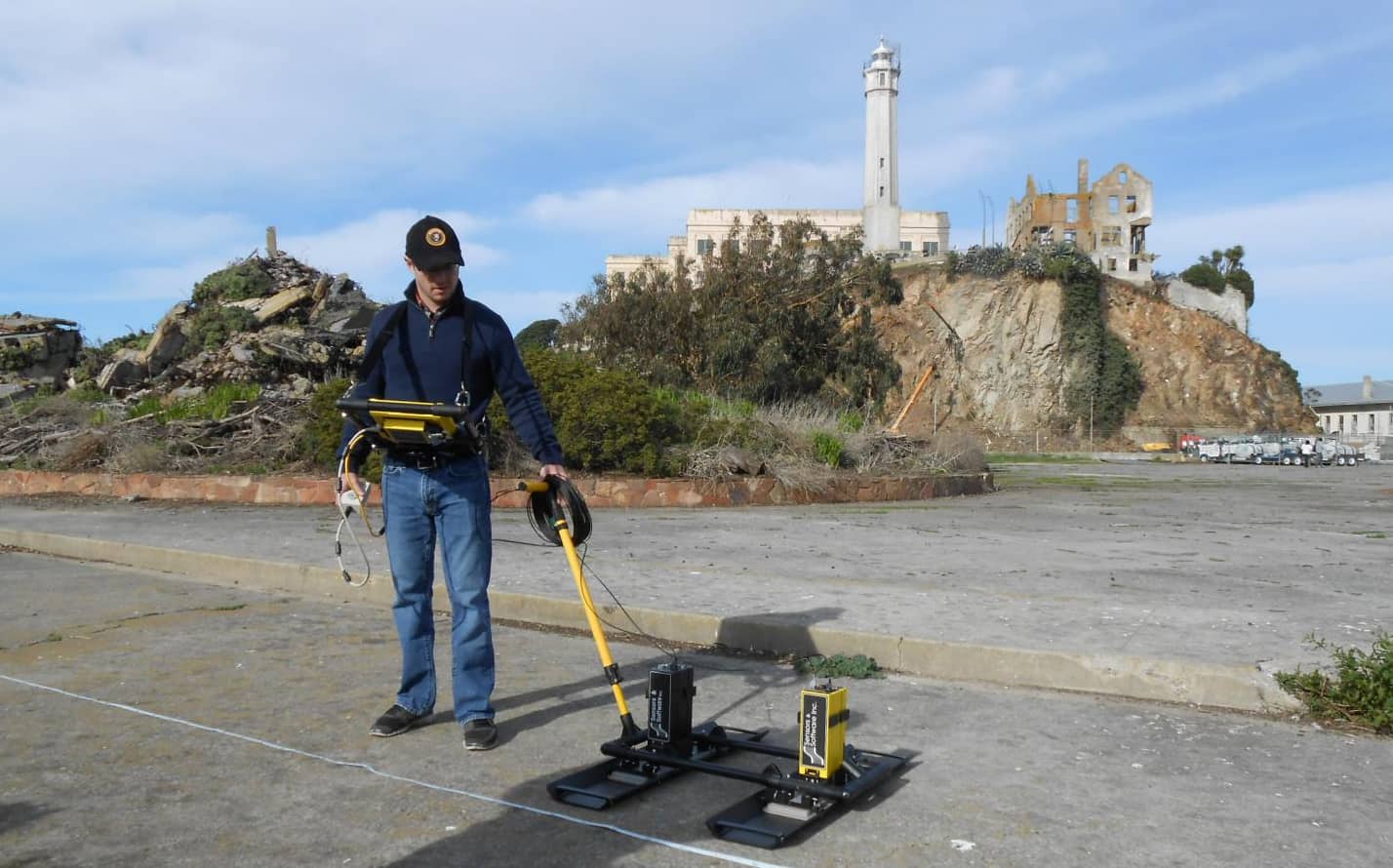
Located on Alcatraz Island in San Francisco Bay, the penitentiary was once home to gangsters and criminals including Al Capone, Alvin ‘Creepy’ Karpis, and George ‘Machine Gun’ Kelly.
Now, archaeologists have used ground-penetrating radar data and terrestrial laser scans to non-destructively uncover a hidden military traverse underneath the prison. Led by faculty at Binghamton University, State University of New York, the team also made use of georectifications – where old digitised maps are linked to a coordinate system so that they can be accurately geolocated in 3D space - to locate and assess the historical remains.
The team’s methods revealed that remnants of buried structures - including a "bombproof" earthwork traverse along with its underlying vaulted brick masonry tunnel and ventilation ducts - ran east to west beneath the prison recreation yard.
"The remains of these historical archaeology features were just a few centimetres beneath the surface and they were miraculously and impeccably preserved,” said Binghamton University archaeologist Timothy de Smet. “The concrete veneer of the recreation yard floor is incredibly thin and, in fact, in places sitting directly atop the architecture from the 1860s. We also learned that some of the earthwork traverses were covered over with thin concrete layers through time, likely to decrease erosion on the rainy windy island. It was wonderful to find the history just beneath our feet that we can visualise for the public."
Prior to developing a reputation as America's strongest prison, Alcatraz Island was a 19th century coastal fortification. According to Binghamton, the fortification is important from a military history perspective as it marks the transition to earthen structures from the traditional brick and masonry constructions that characterised earlier 19th century coastal defences.
Since Alcatraz had been converted to a prison after its military debut, researchers were interested to see if there were any historical remains left of the fortification.
"During the construction of…Alcatraz prison in the early 1900s, there was only one regulation and protection of cultural heritage in the US: the American Antiquities Act of 1906. And even so, Alcatraz would not have been considered under it, as it was so young and seemingly insignificant," said de Smet. "The area was essentially bulldozed from the former military installation to the modern prison we see today. In converting the area to a prison, the vast majority of the previous military history of the island had been erased, but we wondered if perhaps something of that significant time in both the islands and American history remained, but buried and preserved beneath the subsurface.
“As such, we sought non-invasive, non-destructive means to ascertain if any historic archaeological remains lay beneath several parts of the island, like the recreation yard of the infamous US federal penitentiary. We did not know what to expect. We did not know if there would be any extant subsurface architecture of these historically significant remains, or if there was anything left, what their extent and integrity would be like."
The non-invasive process used by researchers has facilitated accurate spatial identification of these and other 19th-century architectural structures depicted in historical documents. With this new breakthrough, the approach can be applied to subsurface investigations at other important cultural landmarks worldwide.
"With modern remote sensing methods like these, we can answer fundamental archaeological research questions about human behaviour, social organisation and cultural change through time without costly and destructive excavation," said he said de Smet.
The research is detailed in Near Surface Geophysics.




Red Bull makes hydrogen fuel cell play with AVL
Formula 1 is an anachronistic anomaly where its only cutting edge is in engine development. The rules prohibit any real innovation and there would be...